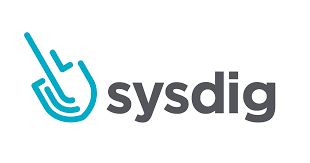Sysdig OSS — Open-Source System Call Analyzer
Why It Matters
Modern Linux systems run dozens of processes, containers, and services, often with little visibility into what they’re actually doing. Sysdig OSS gives admins a microscope into system calls and kernel-level activity. It’s not just for troubleshooting; it’s also used for forensics, incident response, and container monitoring. Many engineers still keep it in their toolkit because it exposes what top or strace can’t show in one place.
How It Works
Sysdig hooks into the Linux kernel to capture system calls and events. It collects data about process activity, file I/O, network connections, and container behavior. Captured events are stored in trace files that can be replayed or filtered later. The tool ships with “chisels” — small scripts that parse events into human-readable views (for example, network usage by process, slow file reads, or suspicious activity). It’s the foundation that later grew into the commercial Sysdig Secure platform, but the open-source version still stands alone as a deep inspection utility.
Technical Profile
| Area | Notes |
| Platform | Linux |
| Core function | Capture and analyze system calls and kernel events |
| Features | Tracing, filtering, chisels for quick analysis |
| Container support | Built-in visibility into Docker and Kubernetes workloads |
| Output | Console views, saved capture files (`.scap`) |
| License | Open source (Apache 2.0) |
Deployment Notes
– Install from repositories or build from source.
– Run with root privileges to capture system activity.
– Use `sysdig` with filters (e.g., by process, user, or event type).
– Save captures for later review with `-w` and replay with `-r`.
– Explore with chisels for predefined analysis patterns.
Where It Fits
– Troubleshooting performance issues on Linux servers.
– Incident response to understand what a process did before compromise.
– Container visibility when debugging Docker or Kubernetes workloads.
– Forensics labs needing syscall-level replay of events.
Caveats
– Linux-only; no support for Windows or macOS.
– Root privileges required, which may be sensitive in production.
– High event volume on busy servers; captures can grow quickly.
– CLI-heavy — steep learning curve for beginners.

